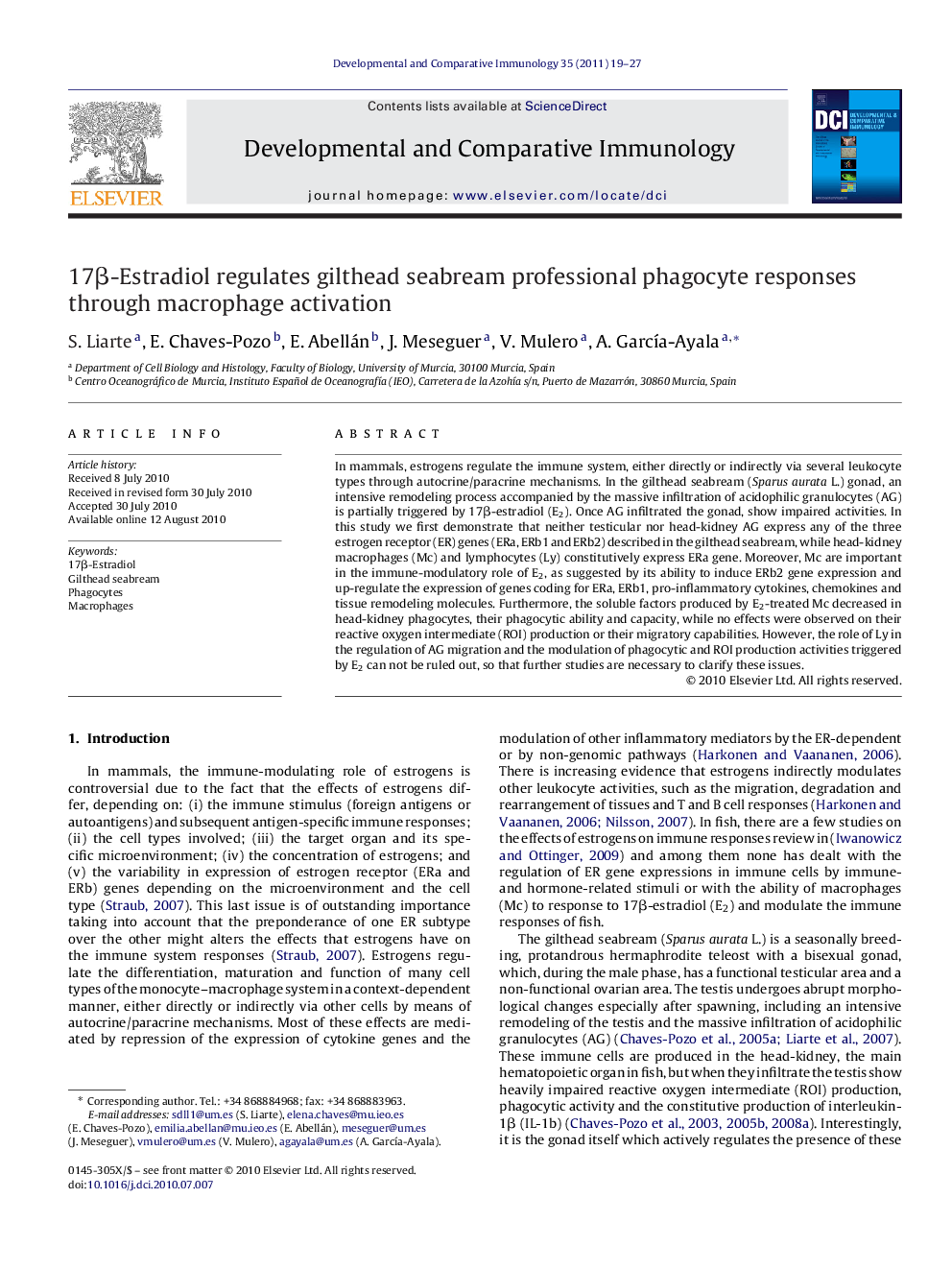| Article ID | Journal | Published Year | Pages | File Type |
|---|---|---|---|---|
| 2429537 | Developmental & Comparative Immunology | 2011 | 9 Pages |
In mammals, estrogens regulate the immune system, either directly or indirectly via several leukocyte types through autocrine/paracrine mechanisms. In the gilthead seabream (Sparus aurata L.) gonad, an intensive remodeling process accompanied by the massive infiltration of acidophilic granulocytes (AG) is partially triggered by 17β-estradiol (E2). Once AG infiltrated the gonad, show impaired activities. In this study we first demonstrate that neither testicular nor head-kidney AG express any of the three estrogen receptor (ER) genes (ERa, ERb1 and ERb2) described in the gilthead seabream, while head-kidney macrophages (Mc) and lymphocytes (Ly) constitutively express ERa gene. Moreover, Mc are important in the immune-modulatory role of E2, as suggested by its ability to induce ERb2 gene expression and up-regulate the expression of genes coding for ERa, ERb1, pro-inflammatory cytokines, chemokines and tissue remodeling molecules. Furthermore, the soluble factors produced by E2-treated Mc decreased in head-kidney phagocytes, their phagocytic ability and capacity, while no effects were observed on their reactive oxygen intermediate (ROI) production or their migratory capabilities. However, the role of Ly in the regulation of AG migration and the modulation of phagocytic and ROI production activities triggered by E2 can not be ruled out, so that further studies are necessary to clarify these issues.
